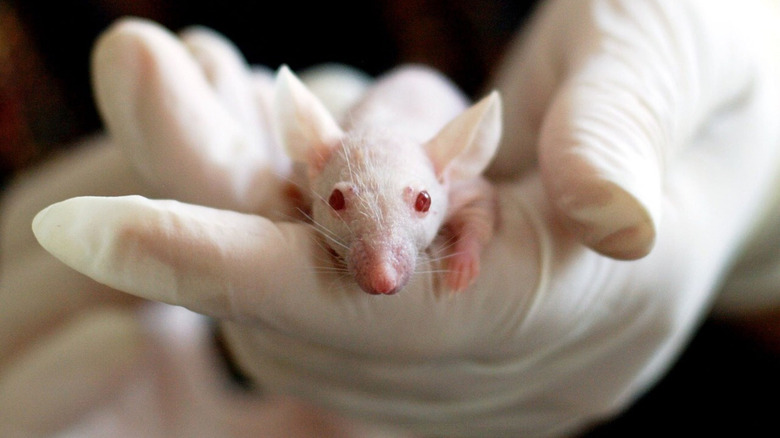Hydrogel Patches Could Be The Next Big Breakthrough For Preventing Cancer Recurrence
Tumor characteristics, disease progression, and treatment type are all factors that can influence one's risk for cancer recurrence, reports the American Cancer Society. Despite the efficacy of primary treatment, leftover cancerous cells can continue to replicate in the body either at the initial tumor site or elsewhere. Levels of immunosuppressive tumor-associated macrophages (TAMs) in the body post-surgery also puts a person at an increased risk for cancer recurrence (via Medical News Today). Recent research published in Current Medicinal Chemistry explains that TAMs aid in the survival of cancer cells and may lead to resistance to treatment medications.
Now, results of an animal study published in Nature Communications reveal that the use of hydrogel patches filled with anti-programmed cell death protein 1 (aPD-1) antibodies, as well as a drug known as Pexidartinib (PLX), may collectively help suppress the growth of TAMs, as well as boost T cell function, thereby decreasing the risk for cancer recurrence in patients following surgery.
Hydrogel patch treatment demonstrated increased cancer survival rates in mice
Researchers used mice with colon cancer, melanoma, and triple-negative breast cancer tumors as test subjects (via Medical News Today). Following tumor removal, their findings revealed that the presence of TAMs in mice who received treatment with PLX-NP@Gel hydrogel patches was reduced by nearly 74%. Additionally, these mice also possessed an increase in T cell count up to 2.8 times higher than mice who had received alternate treatments. Use of the patch also resulted in decreased TAMs levels in the bodies of mice specifically with melanoma.
Mice treated for cancer with the PLX-NP@Gel hydrogel patch also demonstrated increases in longevity, reports Medical News Today. Survival rates of the control mice measured up to 36 days, while hydrogel patch-treated mice lived between 50 to 70 days.
Study researchers believe the success of the hydrogel patch is due to its slow-release delivery system and that it holds the potential to be used in combination with additional cancer therapies (via Medical News Today). However, some scientists believe that the study is limited, stating that further research is needed involving human patients.


